Pictures Found on the Freedmen's Cemetery Site
All of the pictures provided on this page and this site are for educational purposes only.
Reproduction or reuse of pictures is forbidden without express permission of the owner.

Freedmen's Cemetery Logo
This logo was designed by Alexandria Archaeology Assistant City Archaeologist, Dr. Steven Shephard, in 2006. The beautifully executed final drawing was made by Alexandria Archaeology volunteer, Mr. Andrew Flora, who made a few modifications.
At the center of the logo is a headboard of the design seen in historic photographs of the Alexandria National Cemetery, established at the north end of Wilkes Street in 1862. These grave markers were supplied by the U.S. Army Quartermaster Department in Alexandria and records state that this department also supplied the headboards and coffins for Freedmen's Cemetery. The pine boards were whitewashed and the plot number, and presumably, the name of the deceased, and possibly the date of death, were painted in black on the headboard. The number "1864" in the logo represents the year that the cemetery was established. The black silhouette of the African American woman in the center of the board is meant to represent the people, the Freedmen, who were buried at the cemetery. Civilian men, women and many children were buried here, along with African American soldiers of the United States Colored Troops. The rays radiating from the top of the headboard are meant to represent the light of freedom, as well as the souls of the Freedmen ascending into heaven and their final reward. The "F" and "C" are for "Freedmen's Cemetery." The surrounding broken chain wreath symbolizes the severed bonds of slavery which resulted from the American Civil War which transformed Alexandria and the nation.
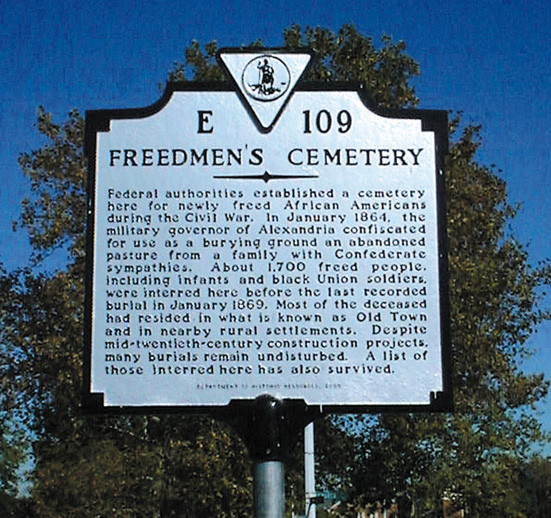
Freedmen's Cemetery Historical Marker

Freedmen's Cemetery Site Before the Spring 2007 Demolition of the Gas Station

This photograph may be the only extant image of Freedmen’s Cemetery. Taken in 1899, it depicts an Alexandria Brick Company wagon. Freedmen’s Cemetery is atop the hill in the background. The brick manufacturer was located to the southwest of the cemetery, and removed clay from the west slope of the hill, reportedly exposing some graves in the early 1890s.
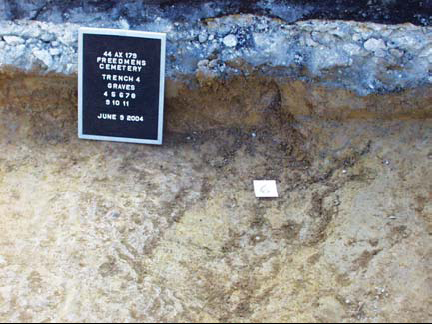
Excavated grave shaft #6. Once located, the graves will be
recorded but not excavated. They will be protected and
incorporated into the Memorial Park scheduled to open in 2010.
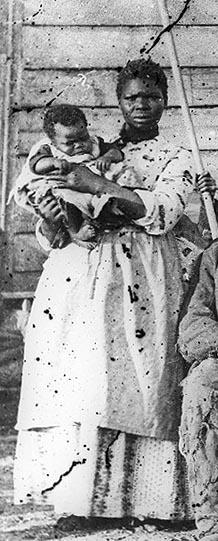
Mother and child at Smith's Plantation, Beaufort, South Carolina, 1862.
Photograph by Timothy H. O'Sullivan. Library of Congress.
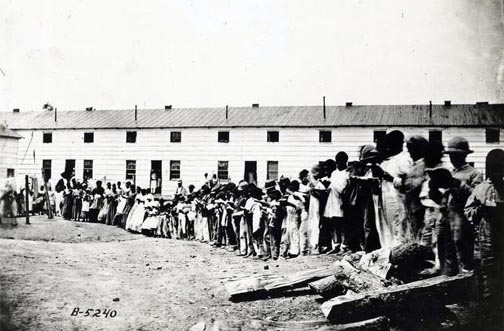
Young scholars at Prince Street Barracks, Alexandria, 1863-1864.
Library of Congress.
Laundry day at "Volusia," a farm off Duke Street near Holmes Run, 1860s. More than half of the burials in Freedmen’s Cemetery were of children. Special thanks to Michael Musick for use of the photograph.
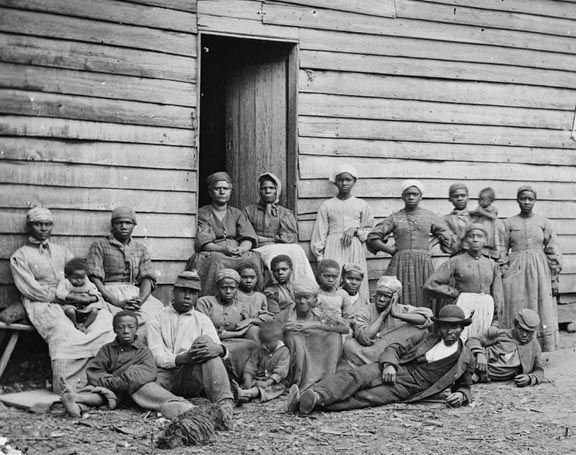
"Contrabands" at Cumberland Landing, Virginia, 1862.
Library of Congress.

James Martin, San Antonio, Texas, May 30, 1937.
Alfred E. Menn, photographer. Library of Congress.
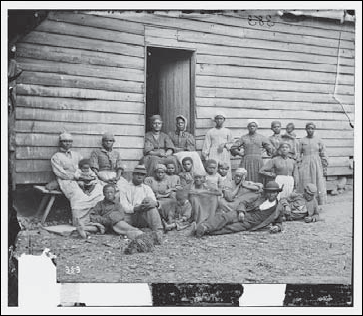
Freedmen, Cumberland Landing, Virginia. Photograph
by James F. Gibson, 1862. Library of Congress, Prints
and Photographs Division, LC-B811-0383.

Freedpeople at Richmond, 1865. Library of Congress.
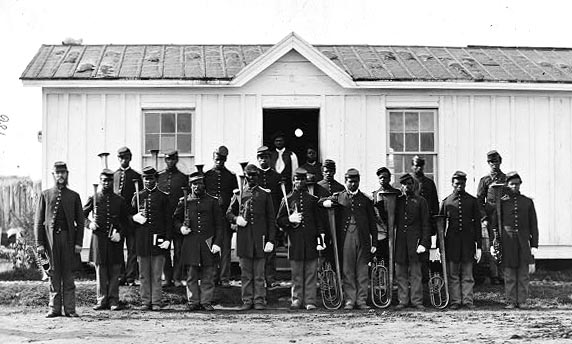
Band of the 107th United States Colored Infantry at Fort Corcoran, Alexandria (Arlington) County, 1865.
Library of Congress.

Alexandria National Cemetery, Andrew Russell Photograph.
Library of Congress.
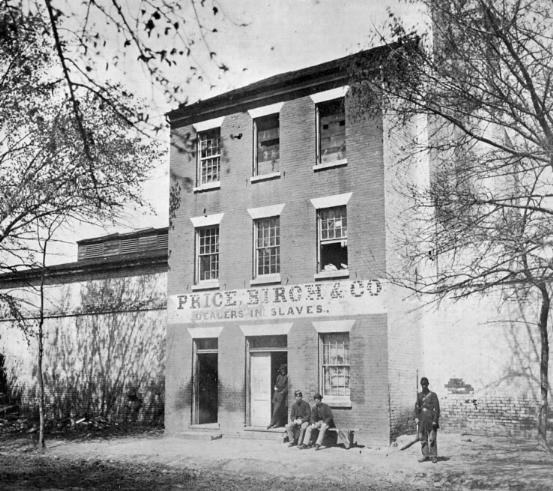
Price, Birch & Co., the successor of the slave trading firm of Franklin & Armfield.
Civil War-period photograph by Capt. Andrew J. Russell. The building still stands at
1315 Duke Street, Alexandria.
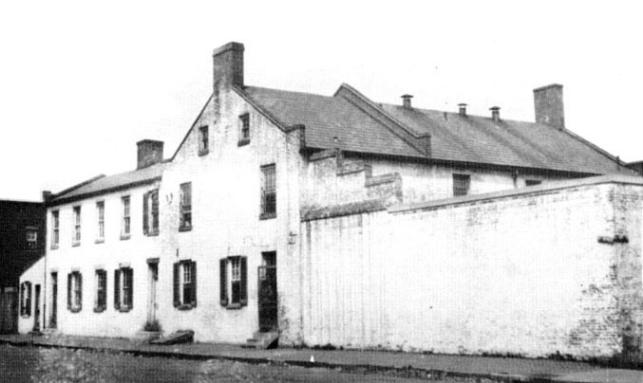
Alexandria Jail Building
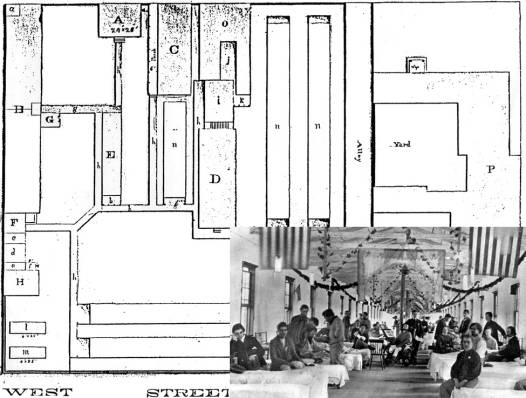 An 1865 Quartermaster Department plan of L'Ouverture Hospital. Named for the hero of the Haitian Revolution, L'Ouverture was erected in the winter of 1863-1864 for the treatment of African American and American Indian soldiers. It replaced a makeshift segregated hospital near Washington and Wolfe Streets. Inset is an interior photograph of one of Alexandria's "white" hospital wards on Independence Day.
An 1865 Quartermaster Department plan of L'Ouverture Hospital. Named for the hero of the Haitian Revolution, L'Ouverture was erected in the winter of 1863-1864 for the treatment of African American and American Indian soldiers. It replaced a makeshift segregated hospital near Washington and Wolfe Streets. Inset is an interior photograph of one of Alexandria's "white" hospital wards on Independence Day.

By A.W. M'Callum, Harper's Weekly, June 22, 1867.
Library of Congress
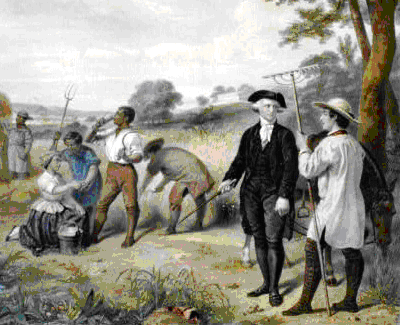
Print by Lemercier, Paris, circa 1853. Library of Congress.
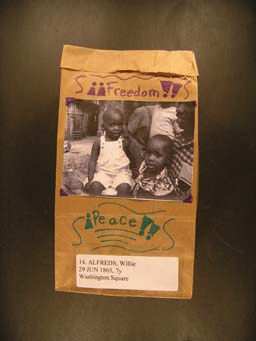
Luminary bag decorated by Tamir Lucas, a 6th
grader from Francis C. Hammond, commemorating 7
year-old Willie Alfreds who died on June 29, 1865.
Spring 2007 Illumination Ceremony Photographs, Courtesy of Dave Cavanaugh
|
Friends of Freedmenís Cemetery |
|
June 5th, 2007


